Ben Venom started making art at a very young age. But in 2008, he decided he no longer wanted to create art that just hung on a wall. He wanted to make something big that was also functional. He found that quilting fit the bill…
Ben had no prior quilting experience, but he did have a large stash of T-shirts representing his favourite heavy metal and punk bands. While they were a far cry from traditional calico cottons, he managed to piece them together.
The results were sensational. His signature style was born, and he hasn’t looked back since.
Ben’s quilts and wearable art incorporate fabrics packed with memories, especially his commission work. Friends and strangers alike bring Ben their beloved vintage clothing, and he cuts, pieces and quilts fantastic designs bearing both beauty and personal stories.
He says his work helps to bridge cultural fears between rock’s counterculture and more traditional society, and we wholeheartedly agree. In a world that is ever more divided, Ben creates an accessible way for anyone to step into his favourite music spaces.
We also appreciate Ben’s conscious pursuit of functional art, as the combination of form and function can challenge textile art’s place amid fine art settings. Just because Ben’s jackets can be worn or his quilts keep his family warm doesn’t mean they aren’t art. The impact of his jackets, totes and quilts when hung on gallery walls is proof positive.
You’re going to love this look into Ben’s edgy, colourful and rhythmic body of work. And his sense of humour? It’s the icing on the cake.
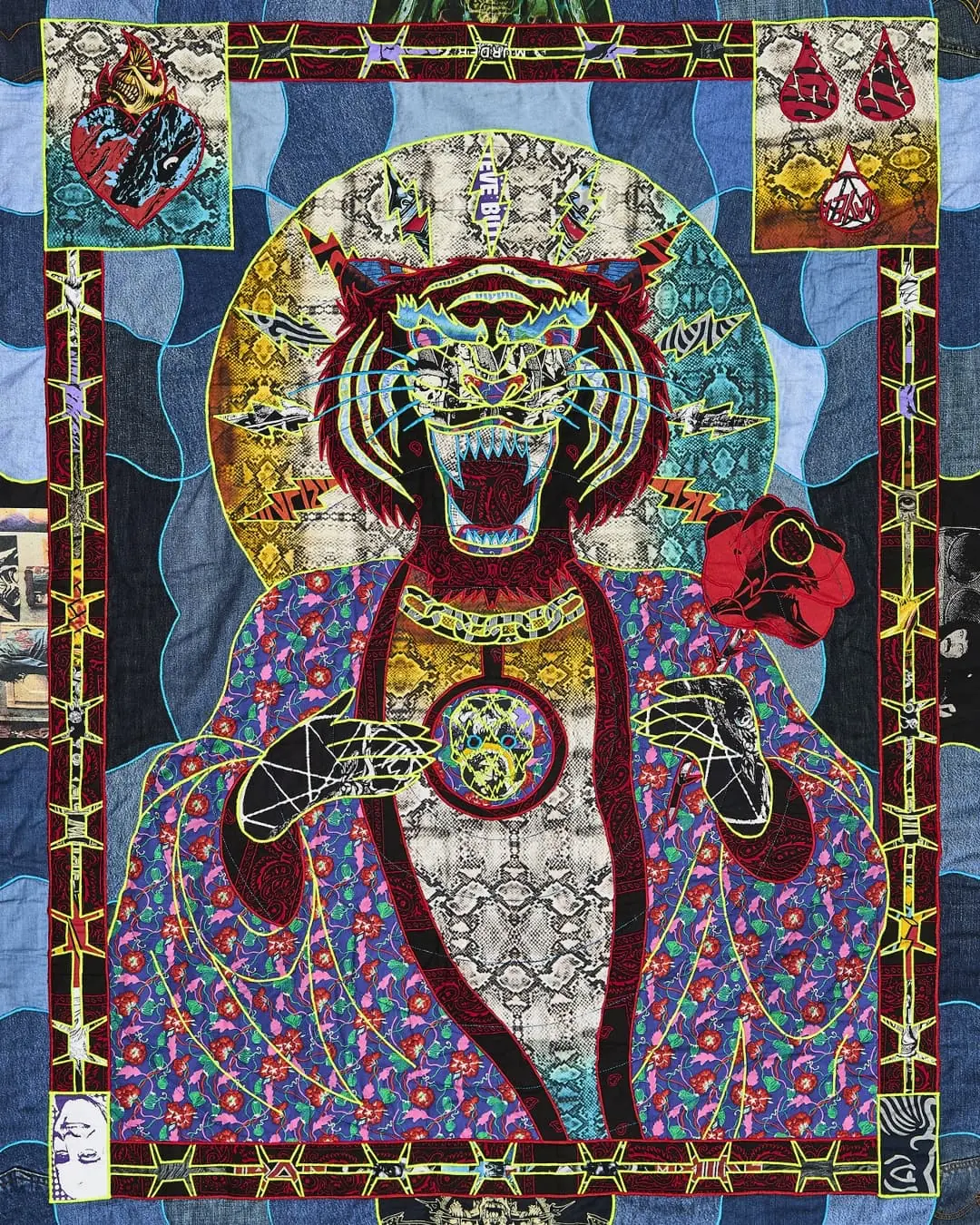
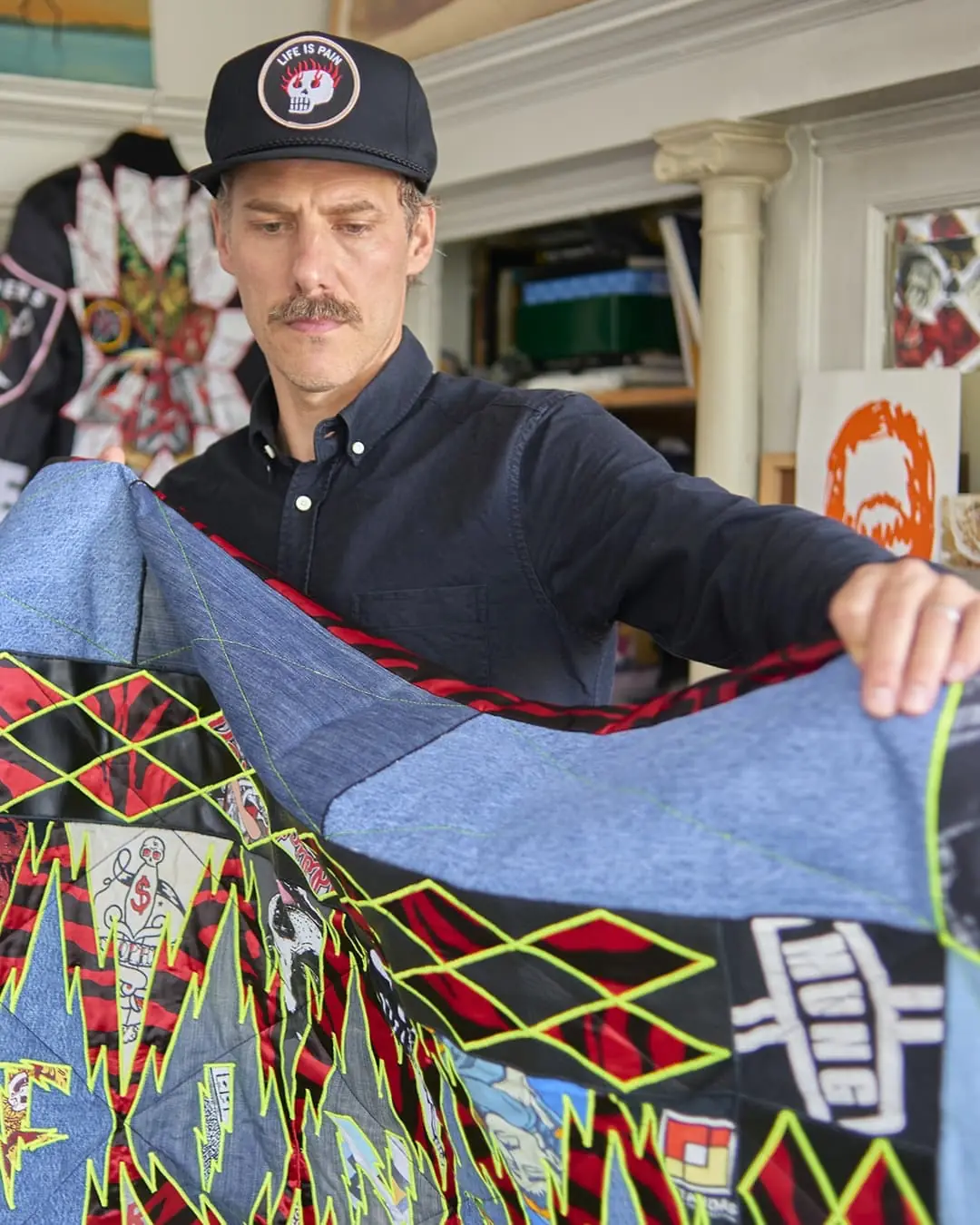
Heavy metal roots
Ben Venom: My mom always hemmed my sister’s and my pants growing up. And my sister started making quilts around the same time I did in 2008.
My earliest memory of working with textiles was screen printing T-shirts of the bands I followed as a teenager. I grew up listening to a lot of punk rock and metal, and at the time, most of the bands were just starting out. With no record label, there wasn’t any merchandise to purchase. Everything was very DIY, so we printed shirts of our favourite bands.
From an early age, I wanted to do something art related. I was always drawing, painting, printmaking with paint and screen printing.
In 2008, I hit a point in my career where I had a bit of a crisis of conscience. I wanted to create something beyond just pretty pictures on the wall. I wanted art that could do a multitude of things.
When my good friend Kevin Earl Taylor invited me to participate in a group show he was curating at the Neurotitan Gallery in Berlin, I wanted to do something really big. So, I decided to make a quilt using all my heavy metal T-shirts – my work has been primarily textile-based since.
My artwork is heavily inspired by a Gee’s Bend quilt exhibition I saw at the De Young Museum in 2006. I was blown away by the attention to design, craft and handiwork the women from that very rural region in the American South infused into their quilts.
They didn’t have a lot of materials at their disposal, so they used recycled denim jeans, blankets and other fabric scraps to construct some really amazing quilts. I liked the idea of upcycling and reusing. Nothing is thrown away.

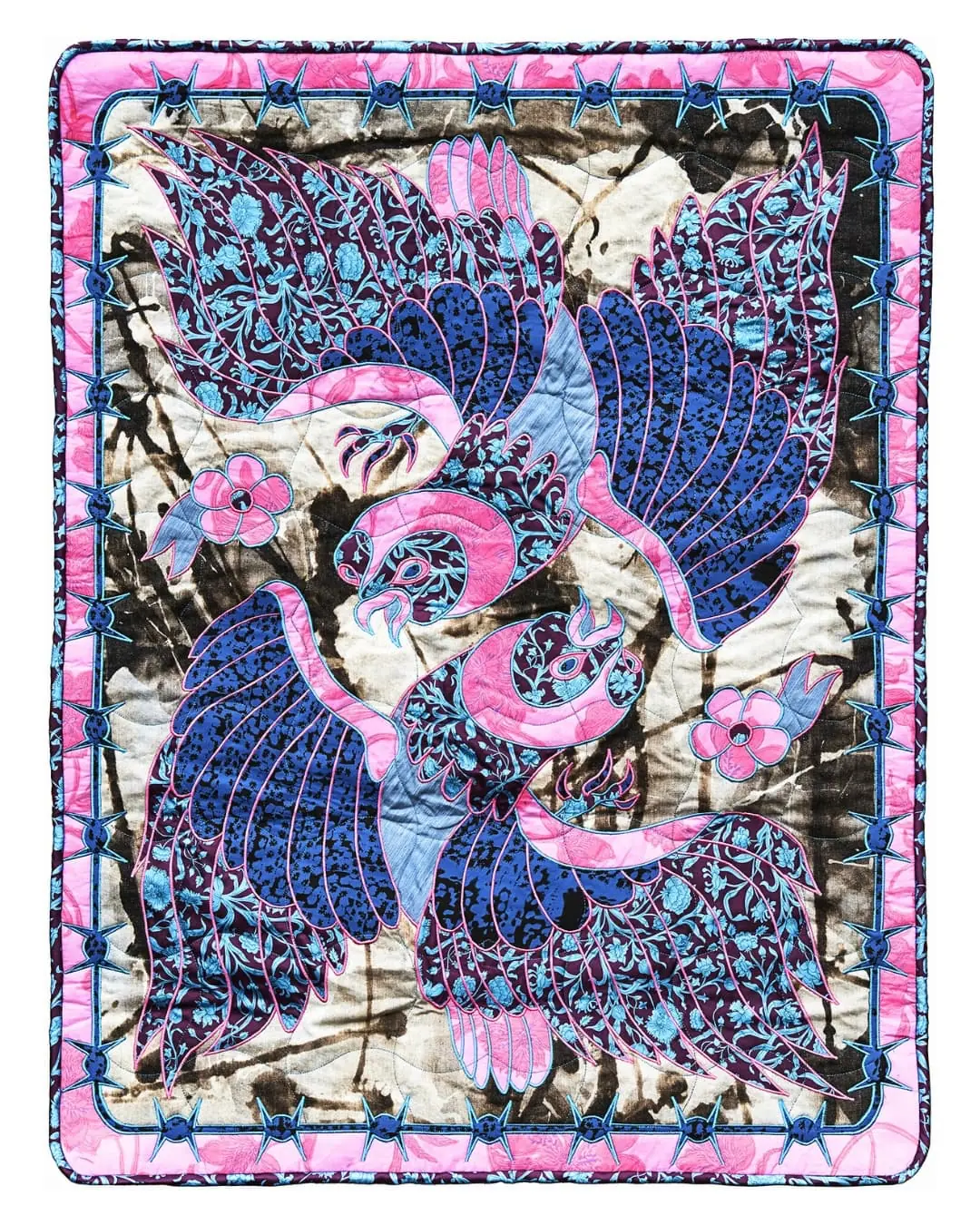
Learning how to quilt
The first sewing machine I bought was a Brother XL-2610. I chose pink because it was the cheaper option, and then I covered it with stickers to make it look cooler!
I also bought a book called Quilting Basics 101 because I had no idea what I was doing. I made a lot of mistakes, and I asked a lot of questions from the employees at the fabric store.
There are always different, better and quicker ways to do things, so that’s why I always ask questions.
Over time, I figured out which fabrics to use, which needles to buy, and more. I also learned to follow my dumb ideas! I never let anything hinder me from seeing my ideas through to the end.
I’m still learning new tricks and techniques to this day. For example, I’ve become more obsessed over time with binding because I want my work to look professional and clean.
For me, art is about research and continual learning. And mistakes are a large part of the process. I embrace them as part of the handmade nature of my work.
‘I believe mistakes offer a visible direct link between the audience and the artist’s hand.’
Ben Venom, Quilt artist
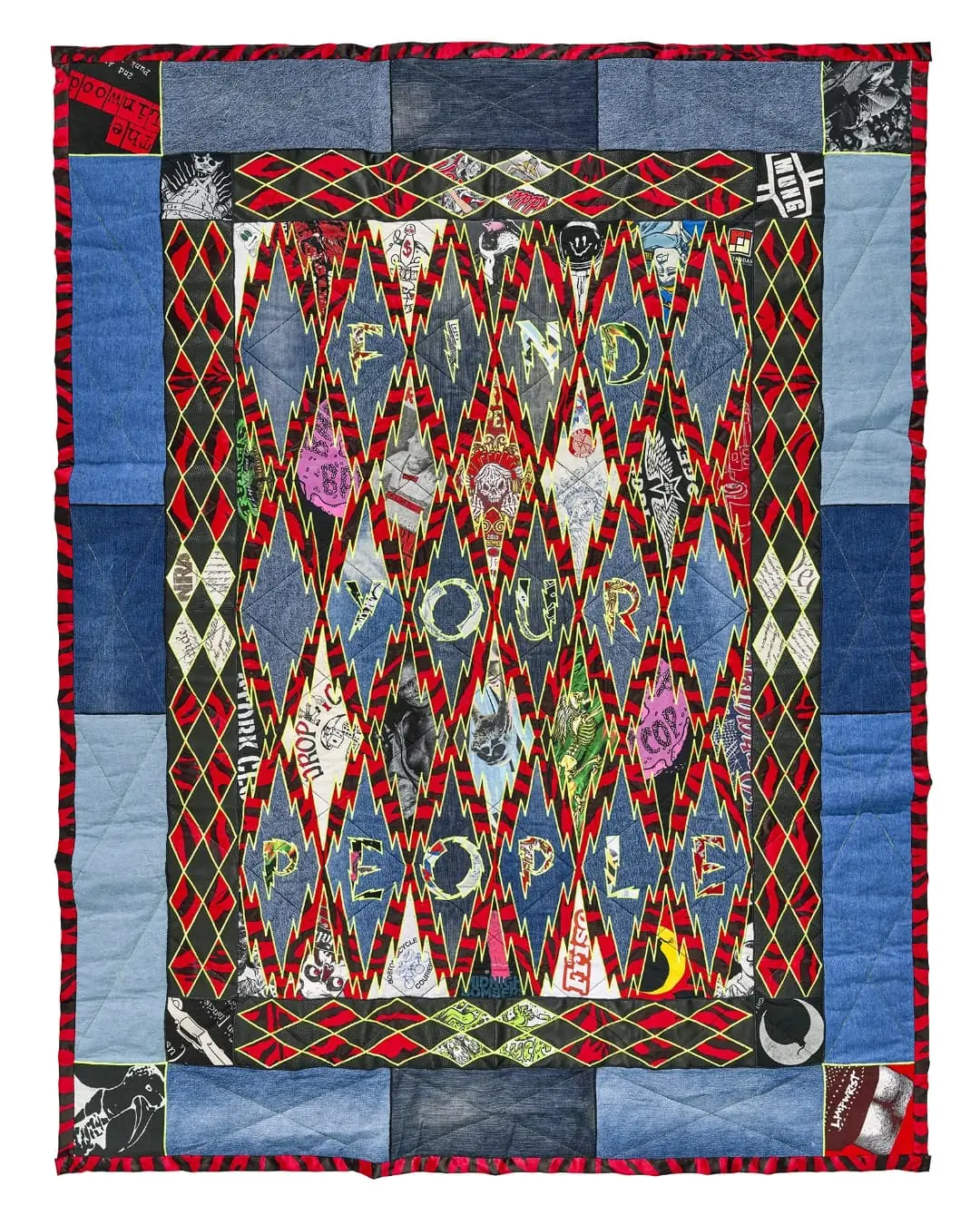
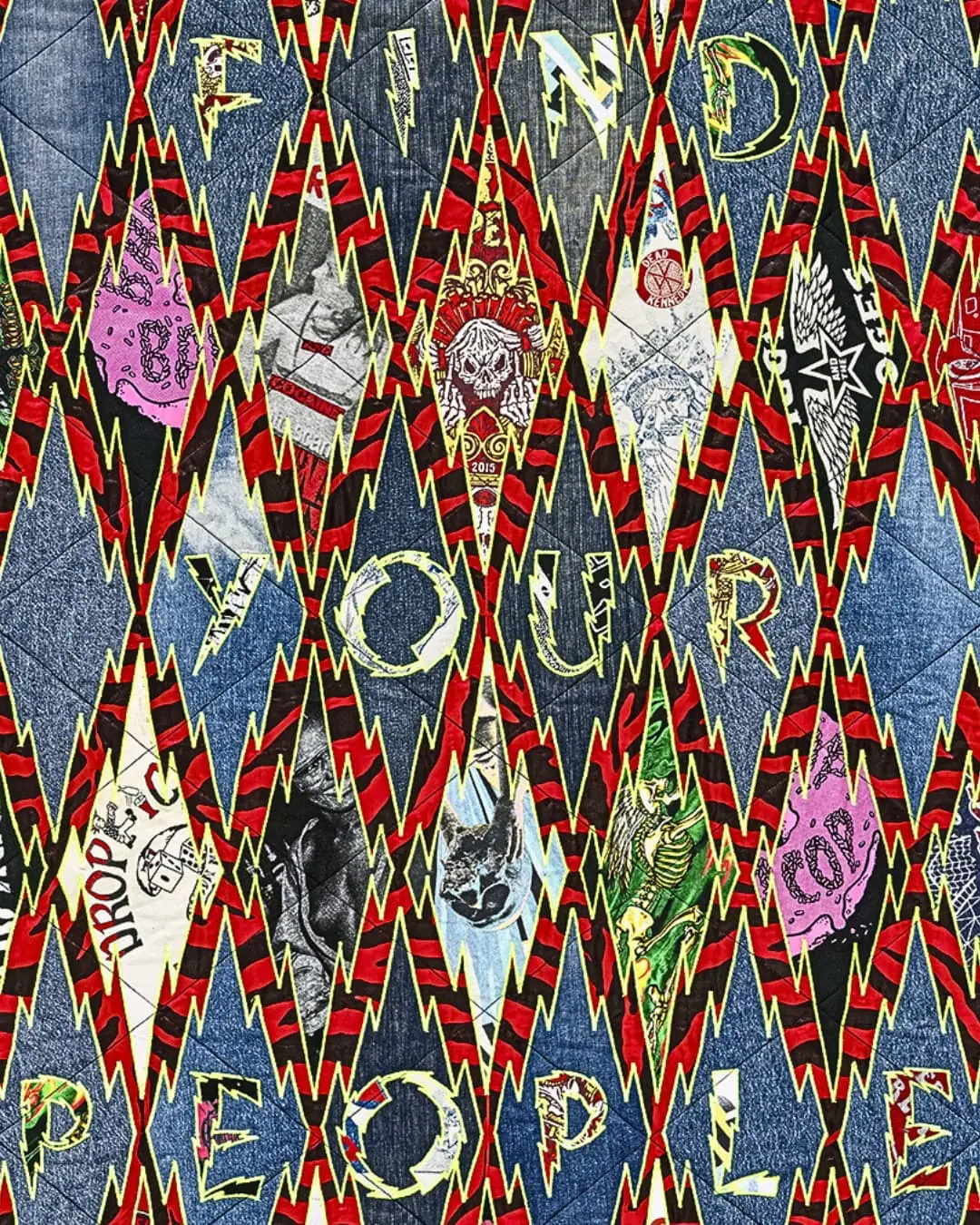
Reducing fears
Using repurposed materials, I contrast the often menacing and aggressive counterculture components of gangs, punk/metal music and the occult with the comforts of domesticity.
‘This collision of traditional quilting techniques with elements tied to the fringes of society re-envisions the materials’ stories through a softer lens.’
Ben Venom, Quilt artist
By presenting these unconventional ideas and themes in a form that is soft, light and tactile, my work can appeal to a wider audience. My art’s textile aspect isn’t heavy, loud or dangerous, which can foster an interest among people not typically familiar or comfortable with the ideas I present.
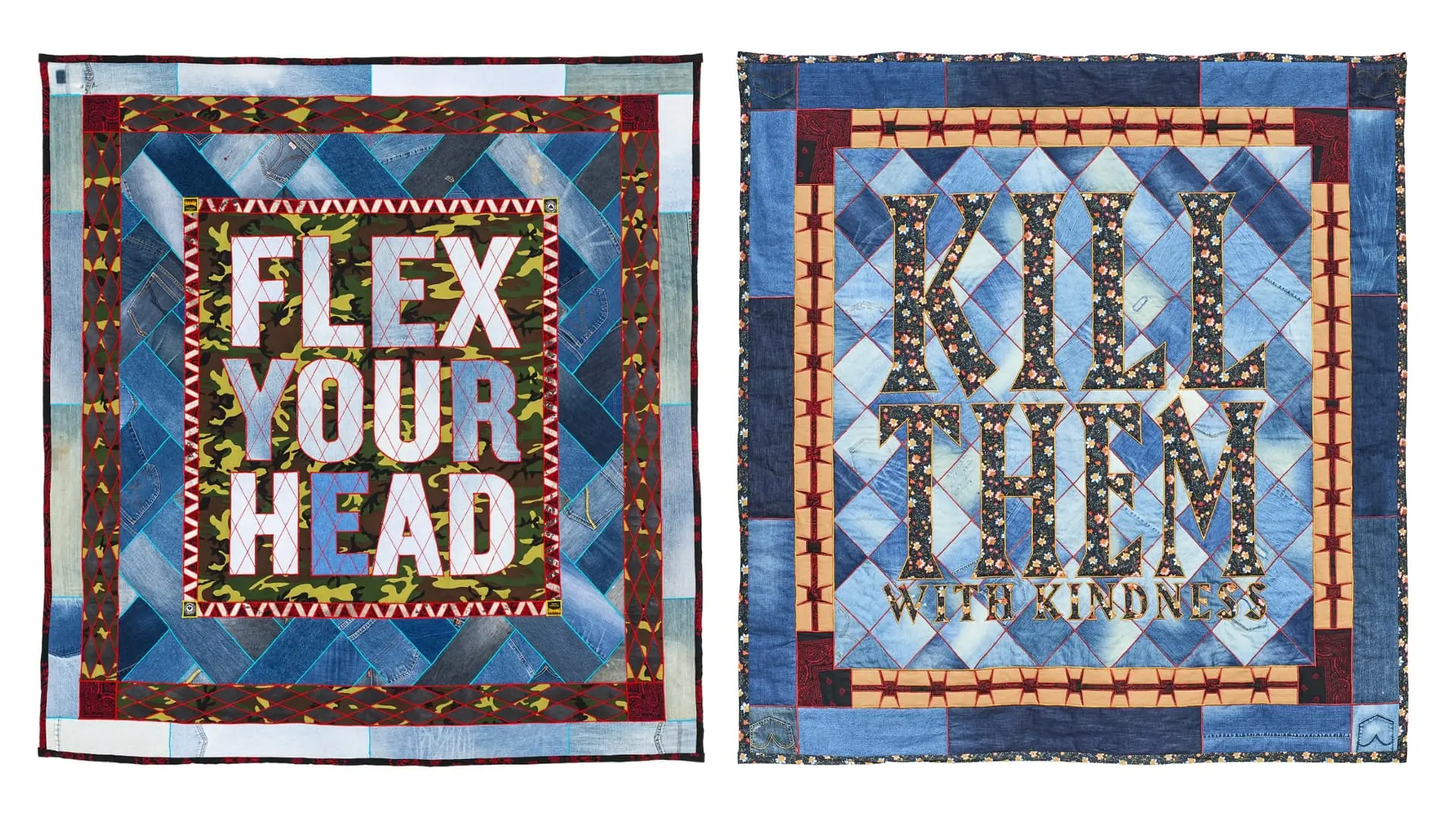
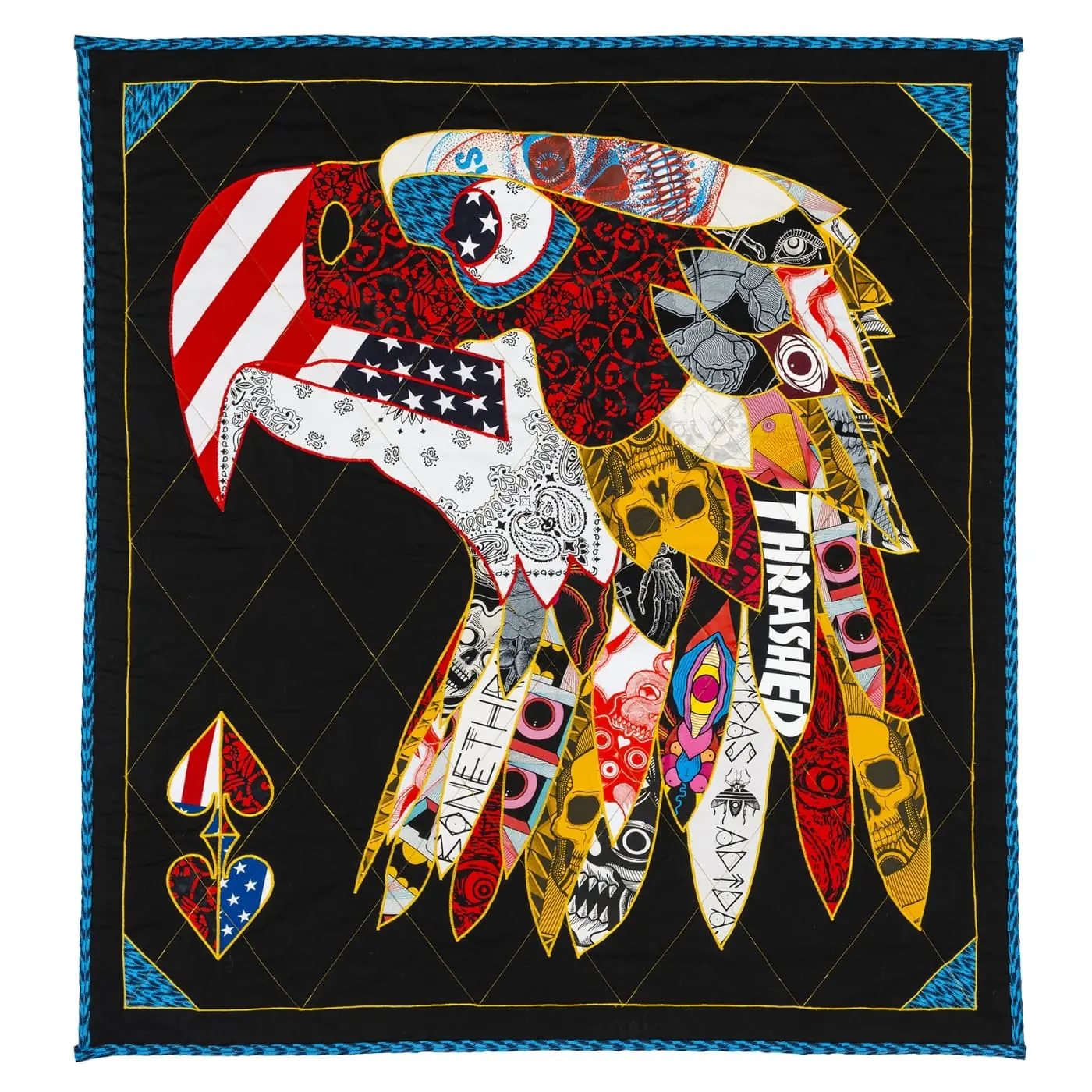
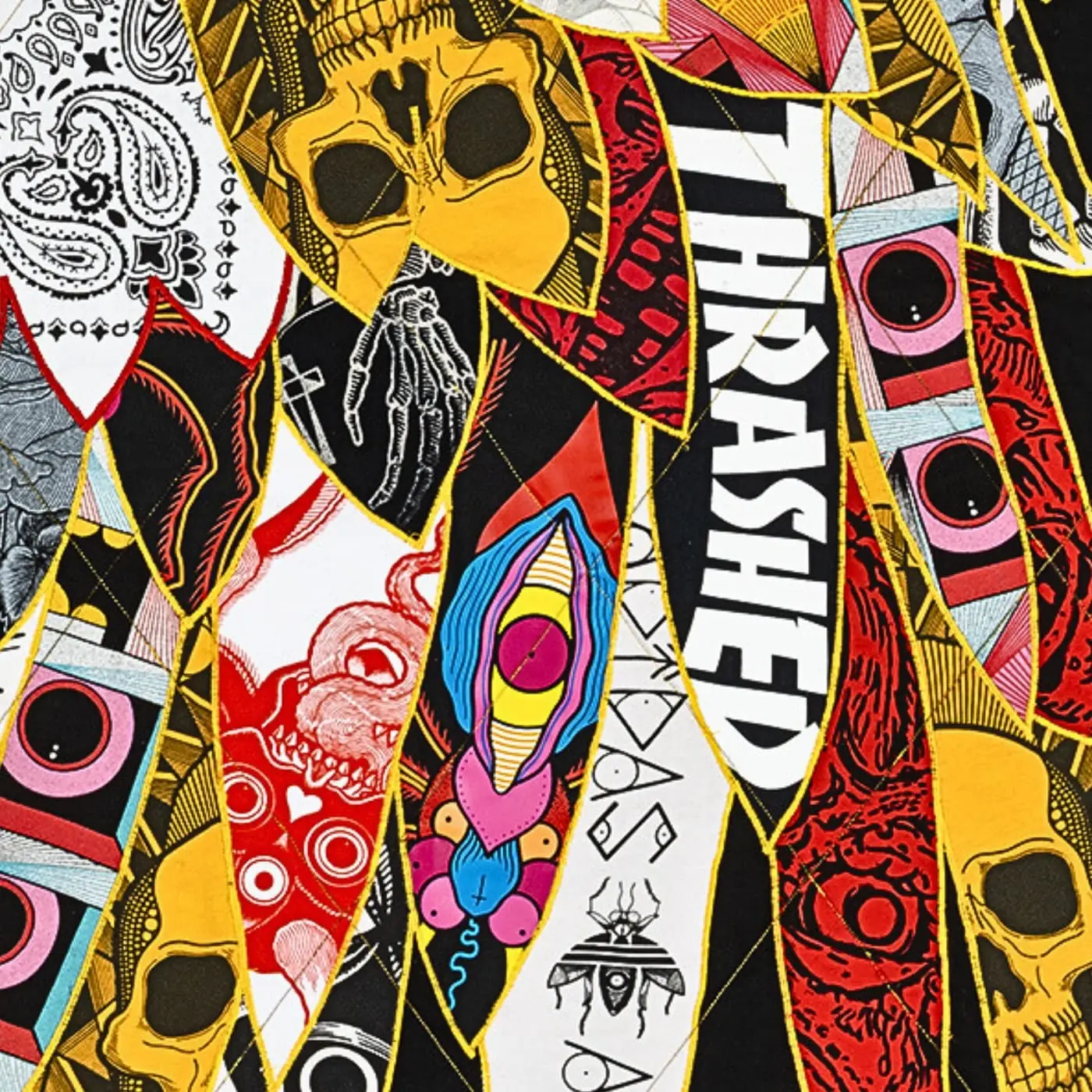
Functional art
My passion is creating art that is both pleasing to the eye and fully functional. Textiles allow me to do that.
I’m interested in sustainability to re-use and rework materials that still have value. I’ve become increasingly aware of the large waste within the clothing industry. As a family, we attempt to have a lower carbon footprint by walking, biking or taking public transportation when possible. This mentality directly affects my art making practice.
Clothing has a history. Maybe you had a pair of pants you wore during a pivotal point in your life. They’re now threadbare, but you don’t want to throw them away. Give them to me, and I’ll cut them up and give them a second life as art with function.
‘By stitching together donated band shirts, jeans, jackets and leather into a unified piece, my quilts display a multitude of personal histories.’
Ben Venom, Quilt artist
Each person’s unexplained stains, tears or rips are displayed to visitors who often see themselves woven into that larger history. A collection of memories, dreams and past experiences are showcased in the form of a functional piece of art.
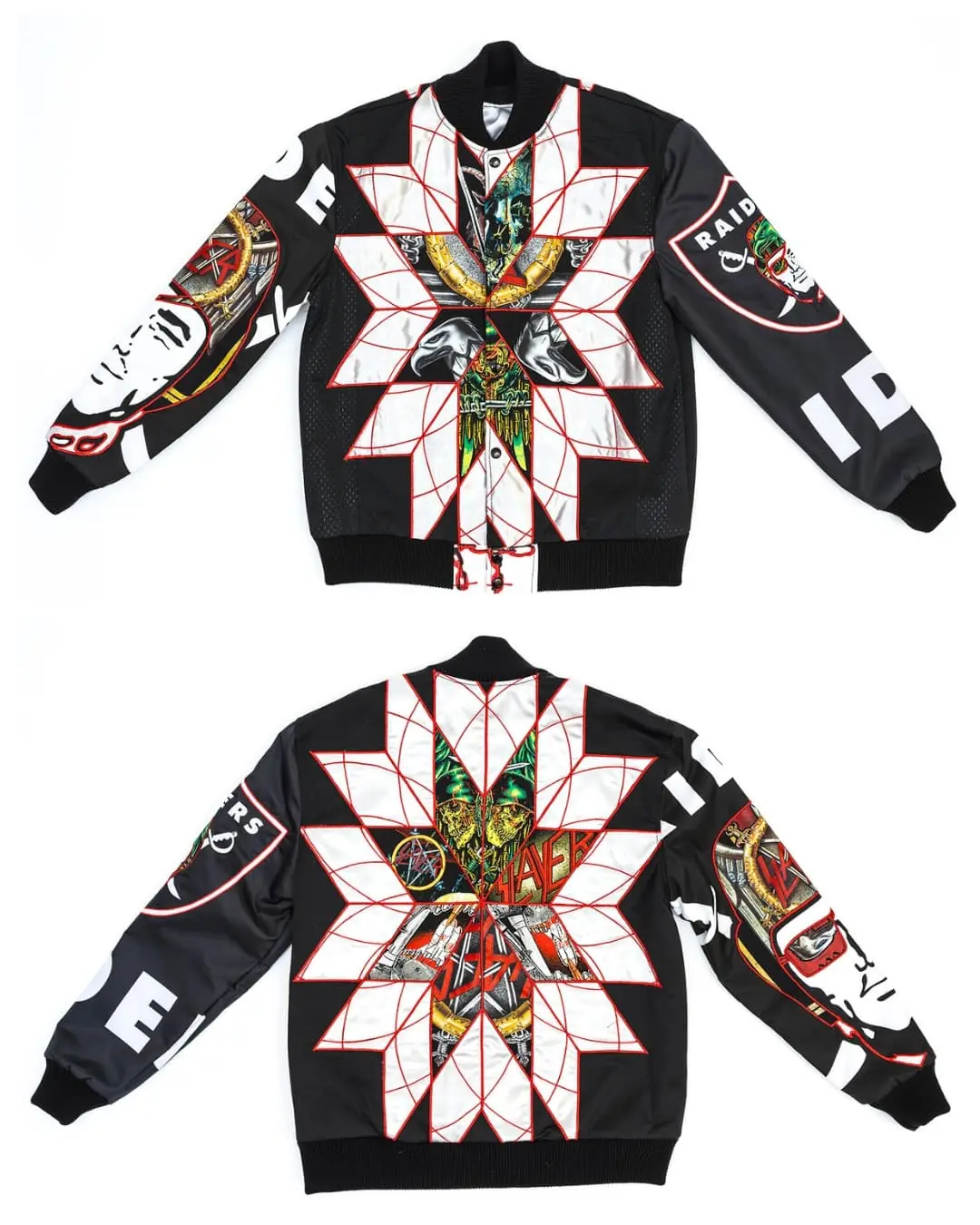
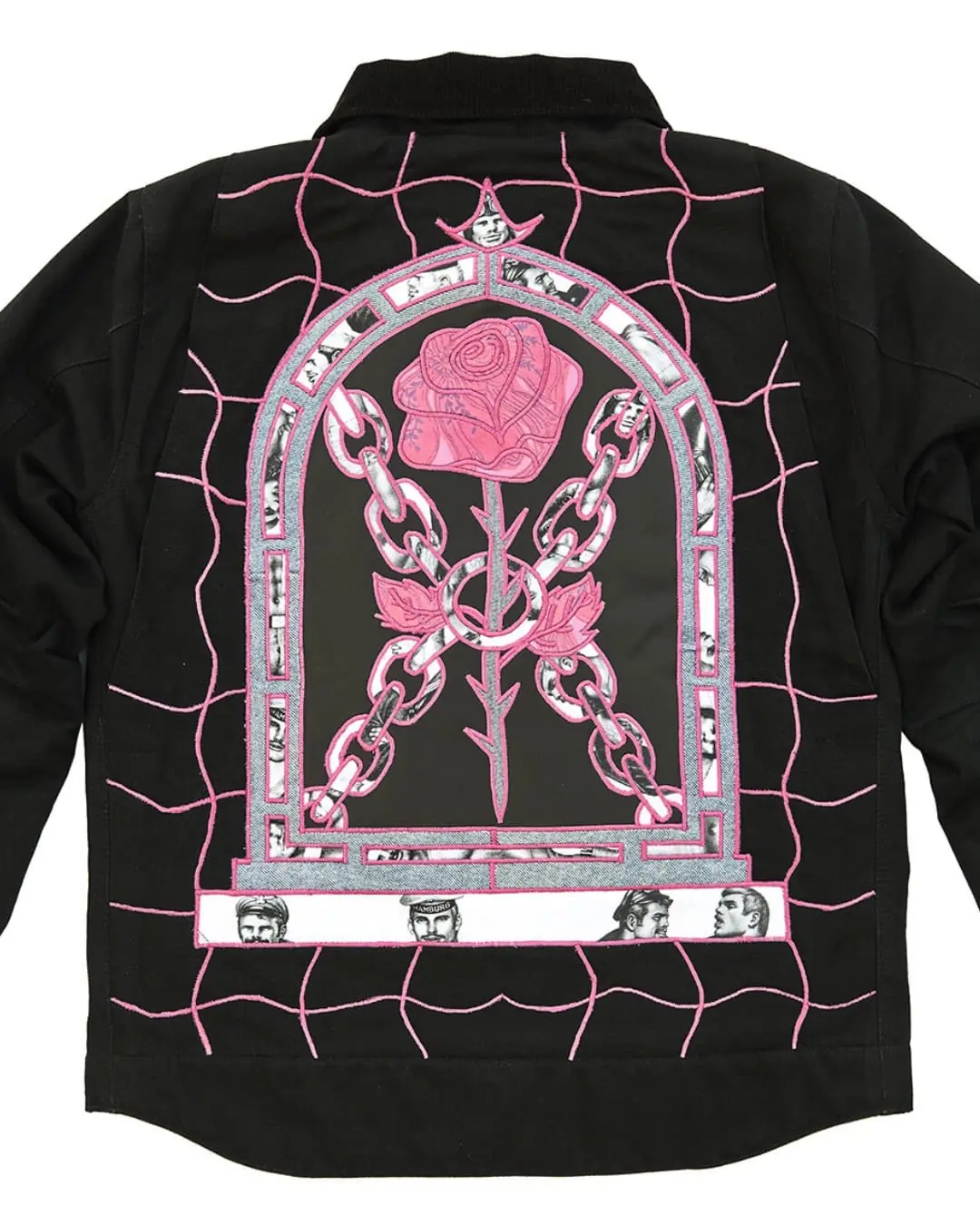
Creative process
Everything I do begins with some amount of research into a particular topic of interest. I use my sketchbook to come up with a general idea using notes and quick drawings.
I choose materials that will add to the overall design. Just like a puzzle, every little piece has a certain place that fits into the larger image.
Next, I import my sketch into Photoshop or Procreate to refine the design and scale it to the final size.
Lastly, I print the design onto copy paper to make cutting templates. And then I cut the fabric pieces and sew them all together. Most of my work is appliquéd onto the top layer and then quilted with my sewing machine.
All my artwork is created in the back room of our apartment. It’s not a very big space, but it offers a flexible work schedule since I can just walk down the hallway to be in the studio.
For larger pieces, I move our kitchen table and work on the floor to piece fabrics together. Working from home allows all the comforts of home, but it can be challenging when the family is there.
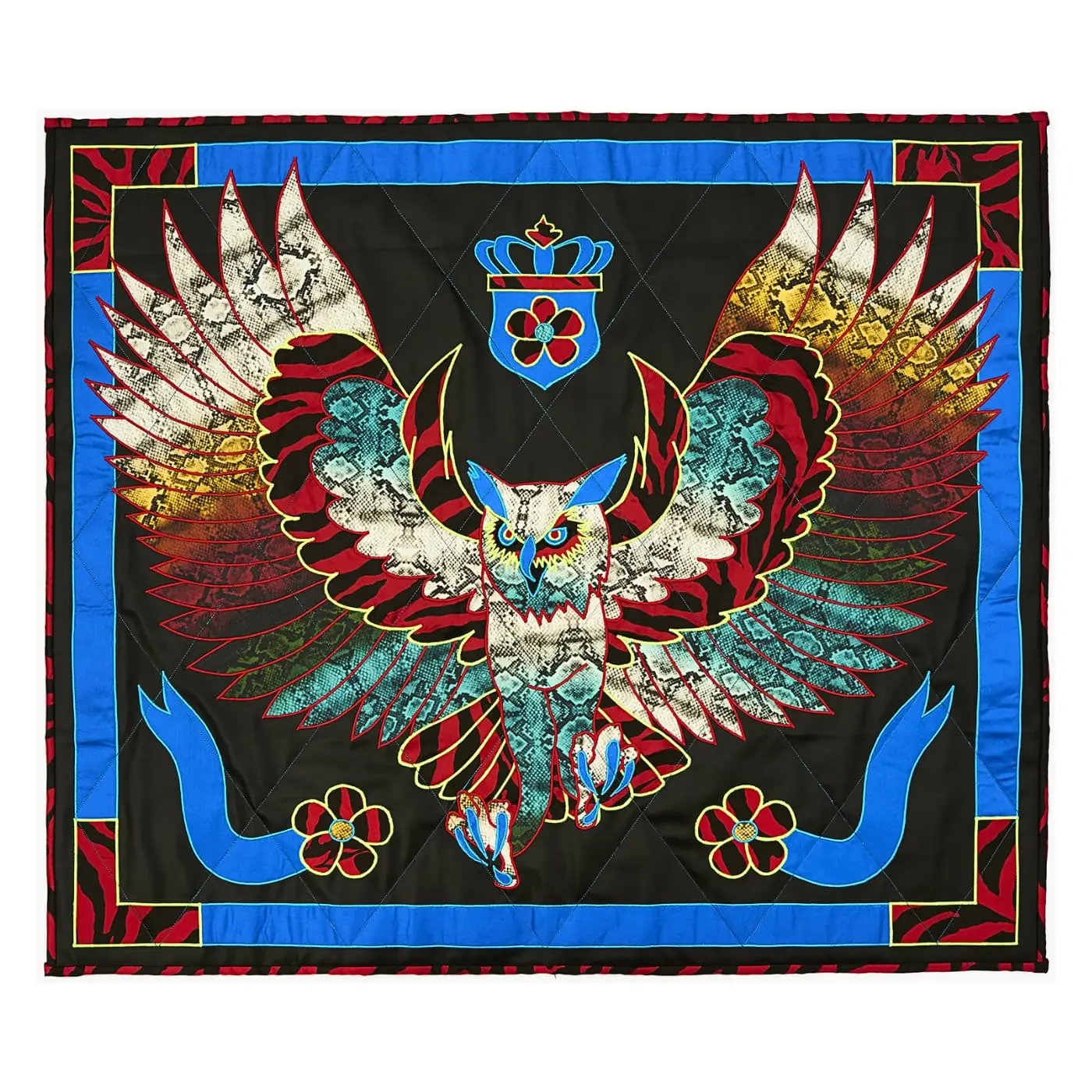
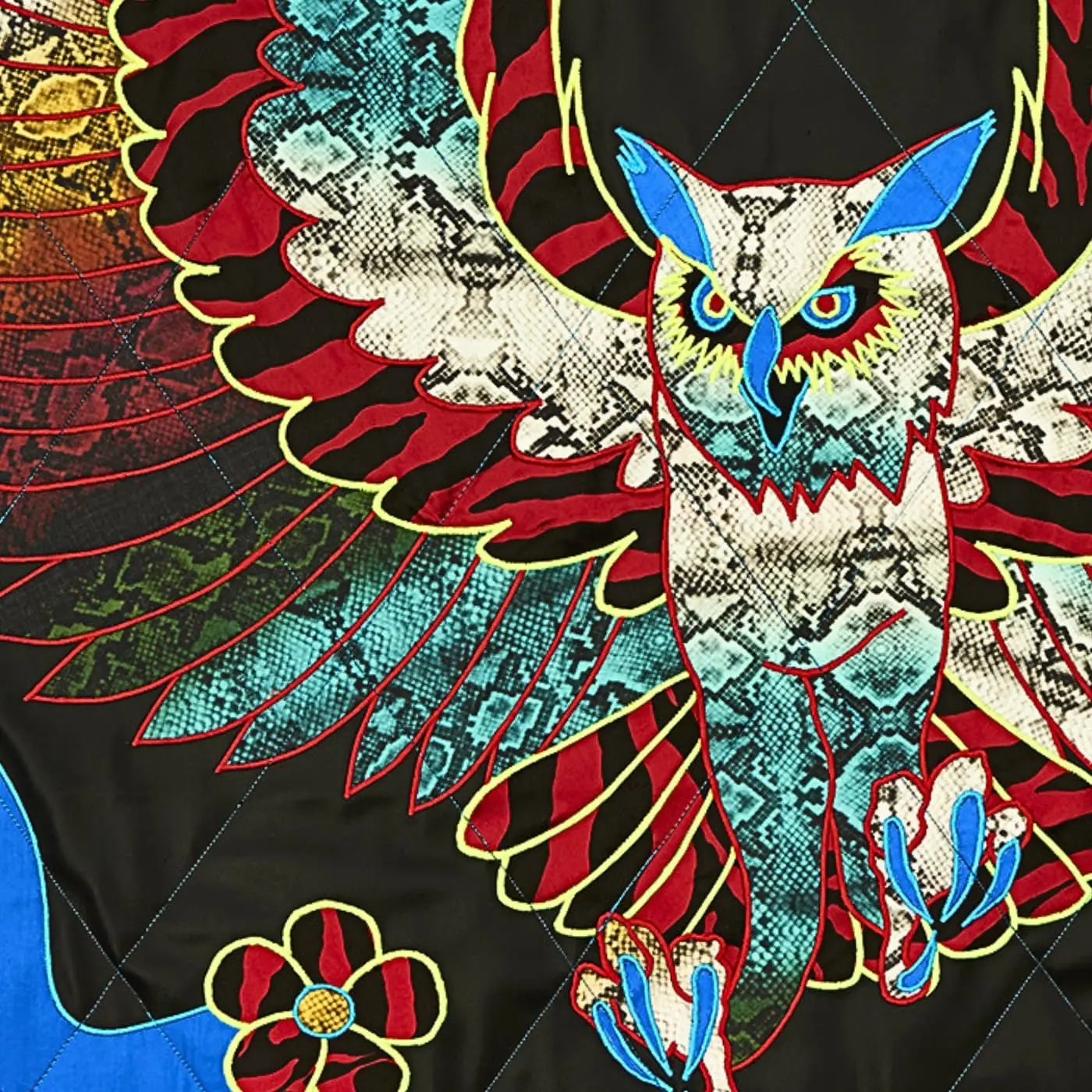
Punching the fabric
I use a Juki-HZL 600 Exceed for all my textile-based work. It’s my most important tool. It’s the second Juki I’ve owned, as I blew the motor on the first one. It does a straight and satin stitch, and it’s not very loud, so it doesn’t disturb the neighbours.
I fold or roll fabrics in a specific way to fit through the sewing machine’s nine-inch throat. Sometimes I am literally punching the fabric through the opening!
All of my garments are backed with a stabiliser to strengthen the fabric, as well as to prevent bunching or fraying. I also try to use thicker reclaimed fabrics like denim or Carhartt workwear fabric.
Much of my fabric is donated, but I also shop at local thrift stores, eBay or Goodwill to fill in the gaps. They’re all excellent sources for interesting reclaimed fabrics.
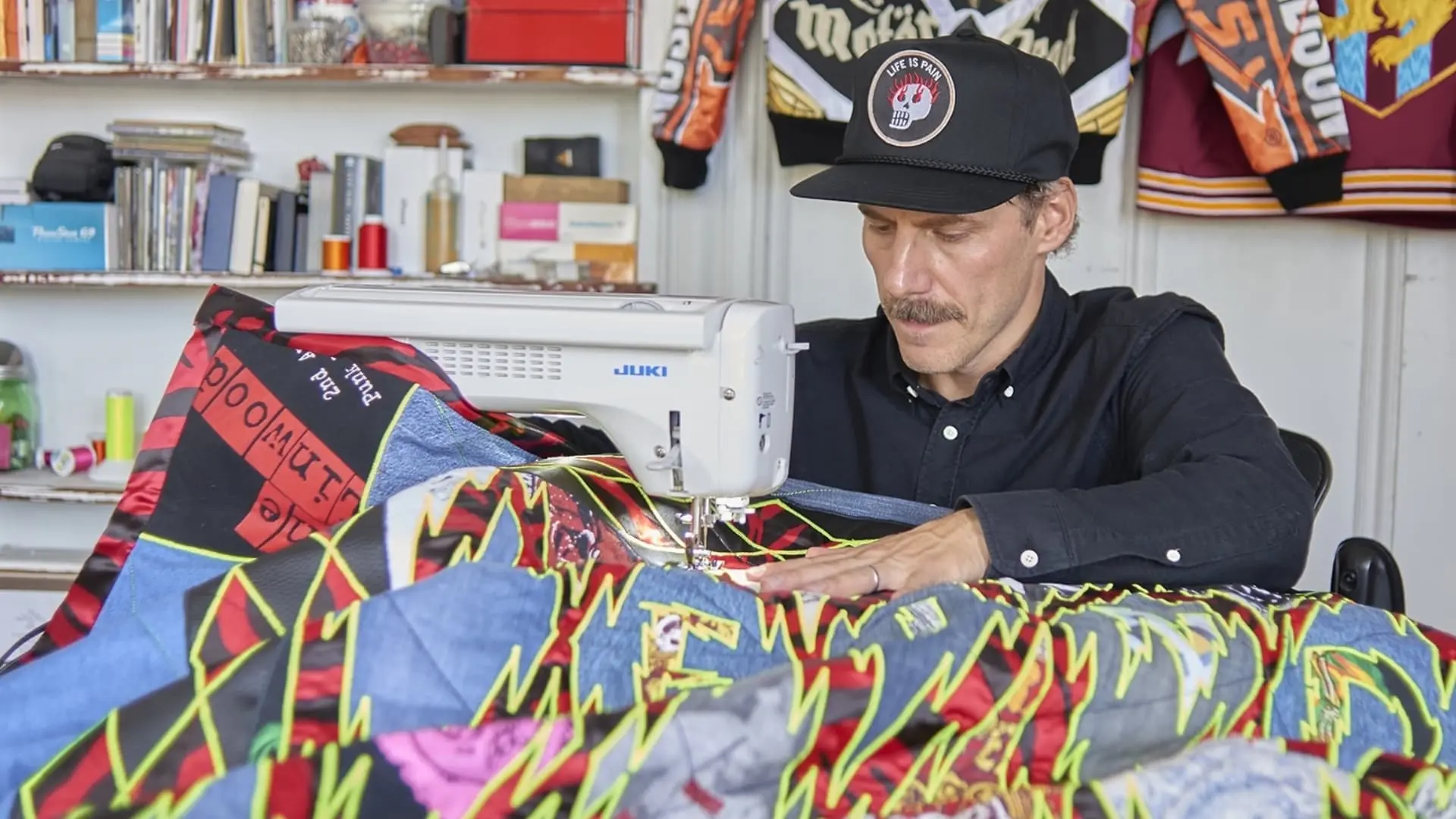
Collaborative designs
I started making custom clothing because I wanted to expand beyond quilts and learn more about how clothes are constructed. I also enjoy seeing people wearing my artwork in public. It’s free advertising, too!
I’ve made custom jackets for friends and others, as well as people I don’t know who have come across my artwork and want a custom piece.
The design process is a constant back and forth, and there is typically a conversation about measurements, as well as fabric and design options. Sometimes I have free rein and other times the client has a general idea of what they want made.
I usually provide the client with at least three different sketches. Once a design is chosen, I refine the approved version and get the client’s confirmation. Then I cut the fabric and start sewing.
I collaborate with Tul Jutargate in Los Angeles, USA to have the jackets constructed with collars, buttons and lining. He also adds a chain stitched label on the inside.
Full Metal Jacket was commissioned by Brann Dailor, the drummer for the band Mastodon. It contains many of his old T-shirts along with all the special stains. The title is taken from the Stanley Kubrick film, as the materials all reference heavy metal music. The jacket is made from a letterman jacket pattern in collaboration with Tul Jutargate.
War Pig was commissioned by a local floral designer Tyson Lee. I designed it with his input and used his vintage Carhartt jackets. Tom of Finland fabric was used as the quilt’s foundation. Tyson was particularly interested in incorporating his zodiac calendar animal (pig), eight flowers and chains
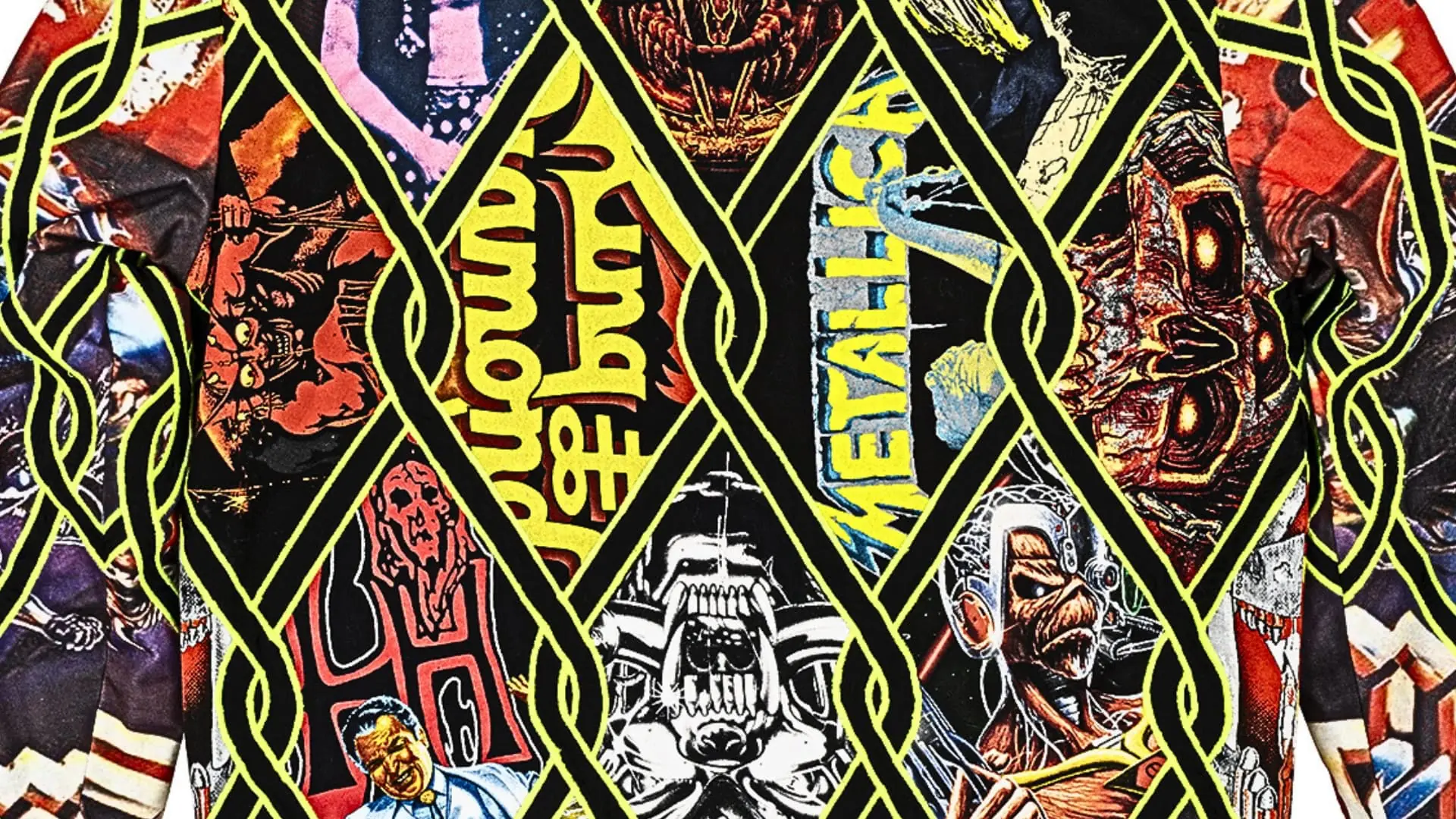
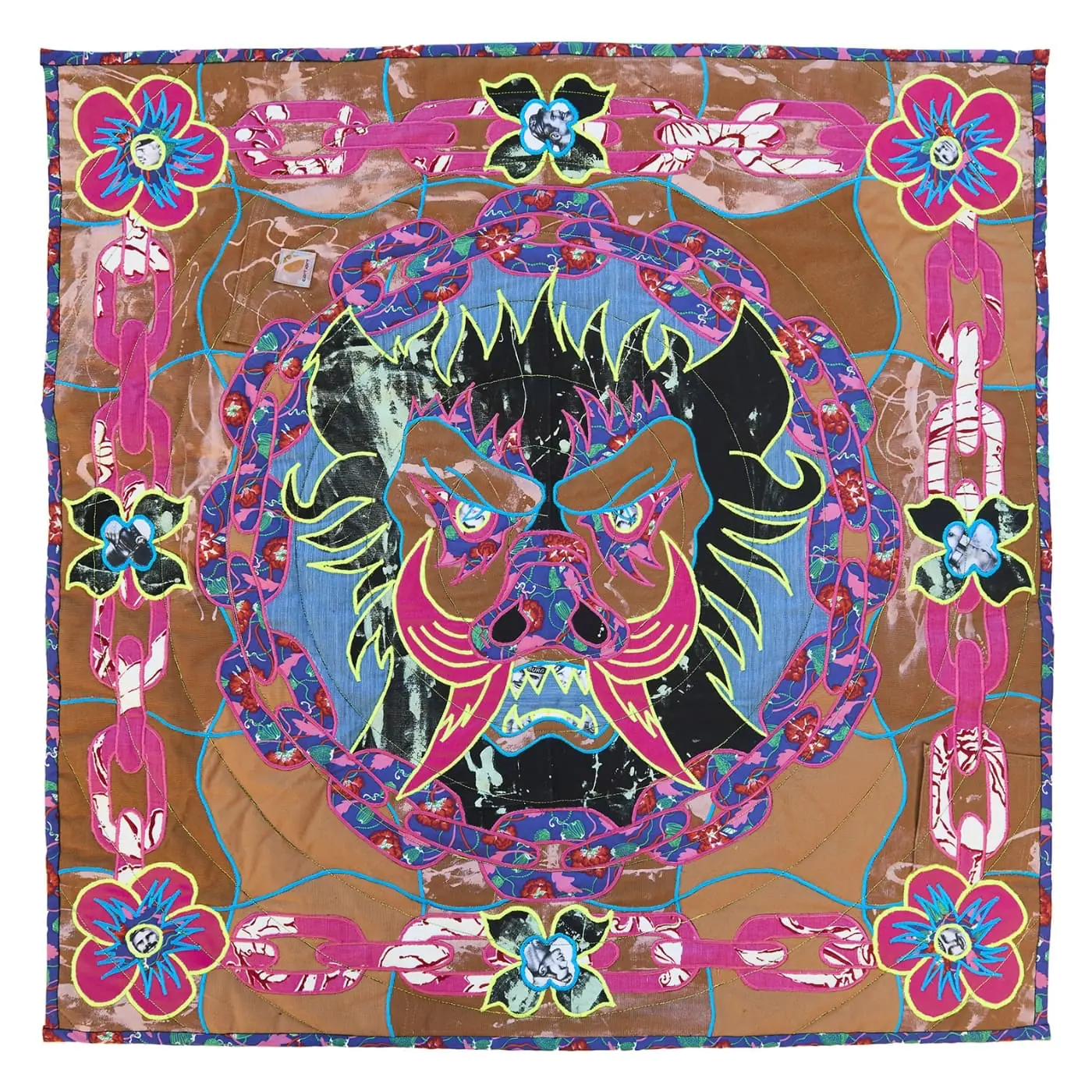
Thrasher love
My THRASHER quilt is currently my favourite. I grew up skateboarding and listening to punk rock/heavy metal music in the suburbs of Atlanta, Georgia, USA. THRASHER Magazine was a window into everything cool for me and my friends.
We also constantly watched skateboard videos on my videocassette recorder in slow motion to learn each new trick.
The quilt was commissioned by Tony Vitello, the owner of THRASHER Magazine. It honours the influence skateboarding has had on me from then to now. My daughter has recently expressed interest in learning to skate, so the ride continues.
It’s made from THRASHER T-shirts, and a Carhartt vest is used on the backside to honour skateboarder and THRASHER editor Jake Phelps.
It features a Lacoste collaboration shirt by Alan Gonzalez and blue Vans fabric designed by Rachael ‘Steak’ Finley Wright (@instasteak) from one of professional skateboarder Lizzie Armanto’s uniforms, like the one she wore at the Tokyo Olympics.
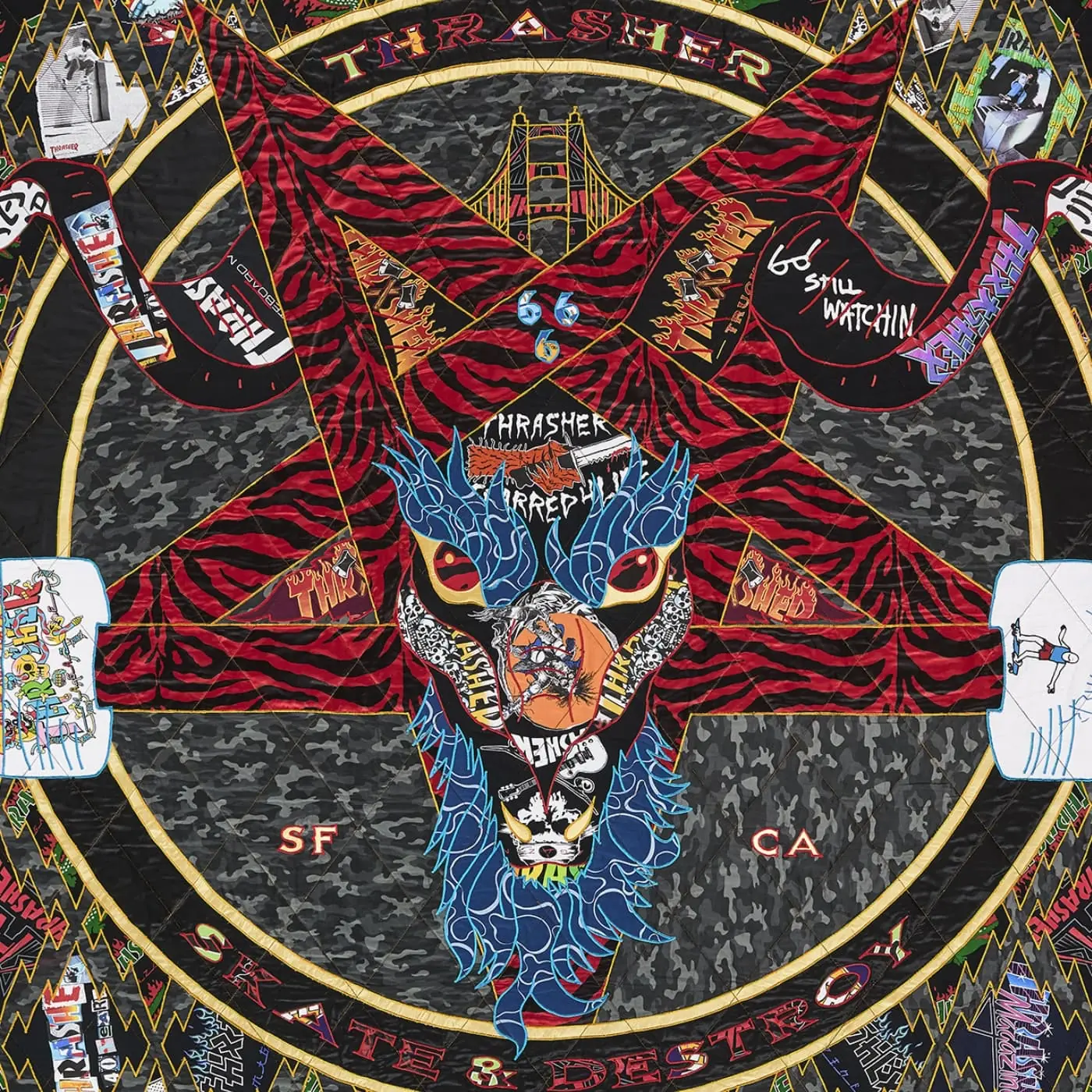
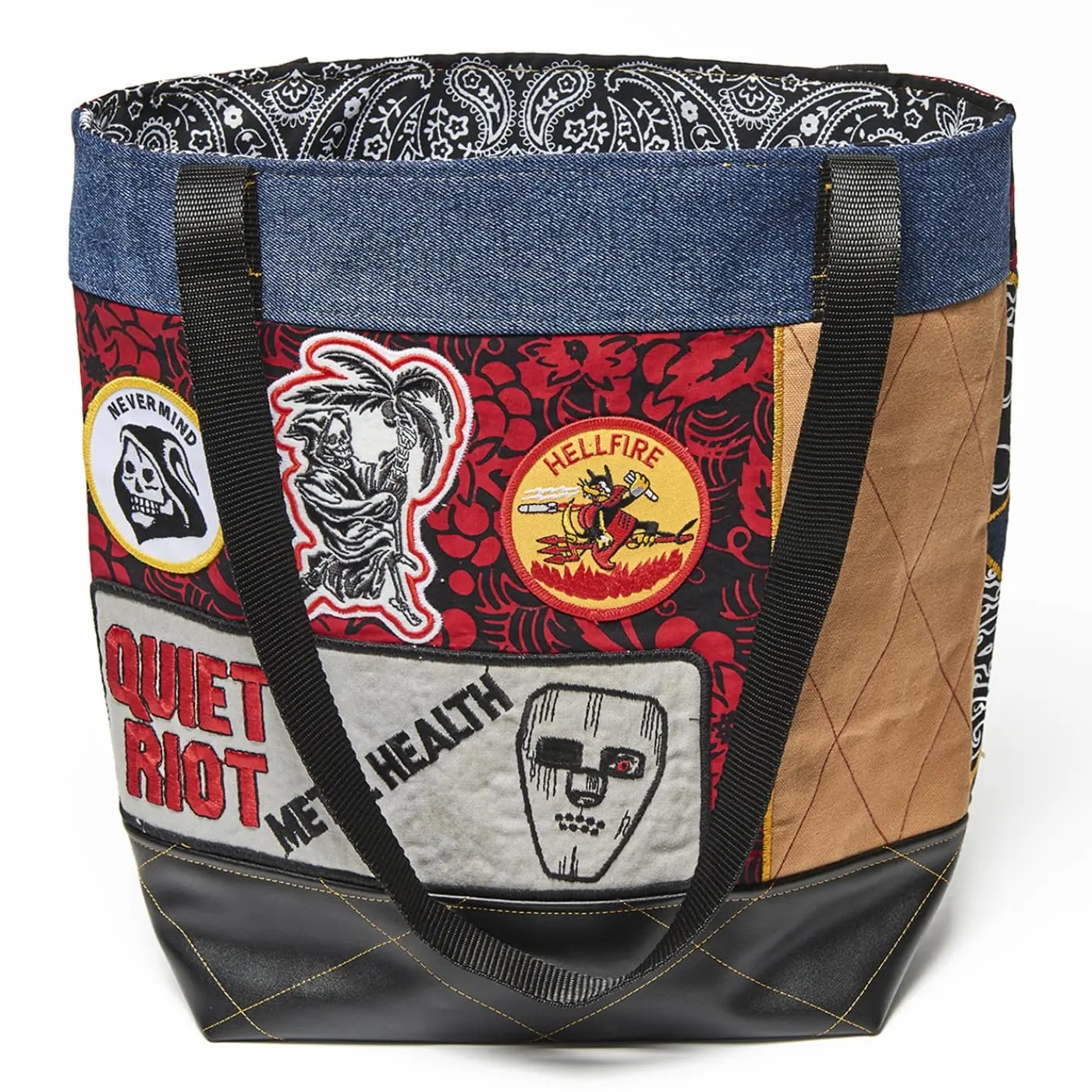
Trendy tote bags
My tote bags originally came about in response to San Francisco’s 2007 ban on plastic bags at grocery stores. I initially made a few tote bags for my wife to take to the grocery store, and it took off from there.
The bag’s small size and ability to be customised with different design elements has kept me interested. I’ve started to add zippers and more pockets. Each bag is a one-of-a-kind design.
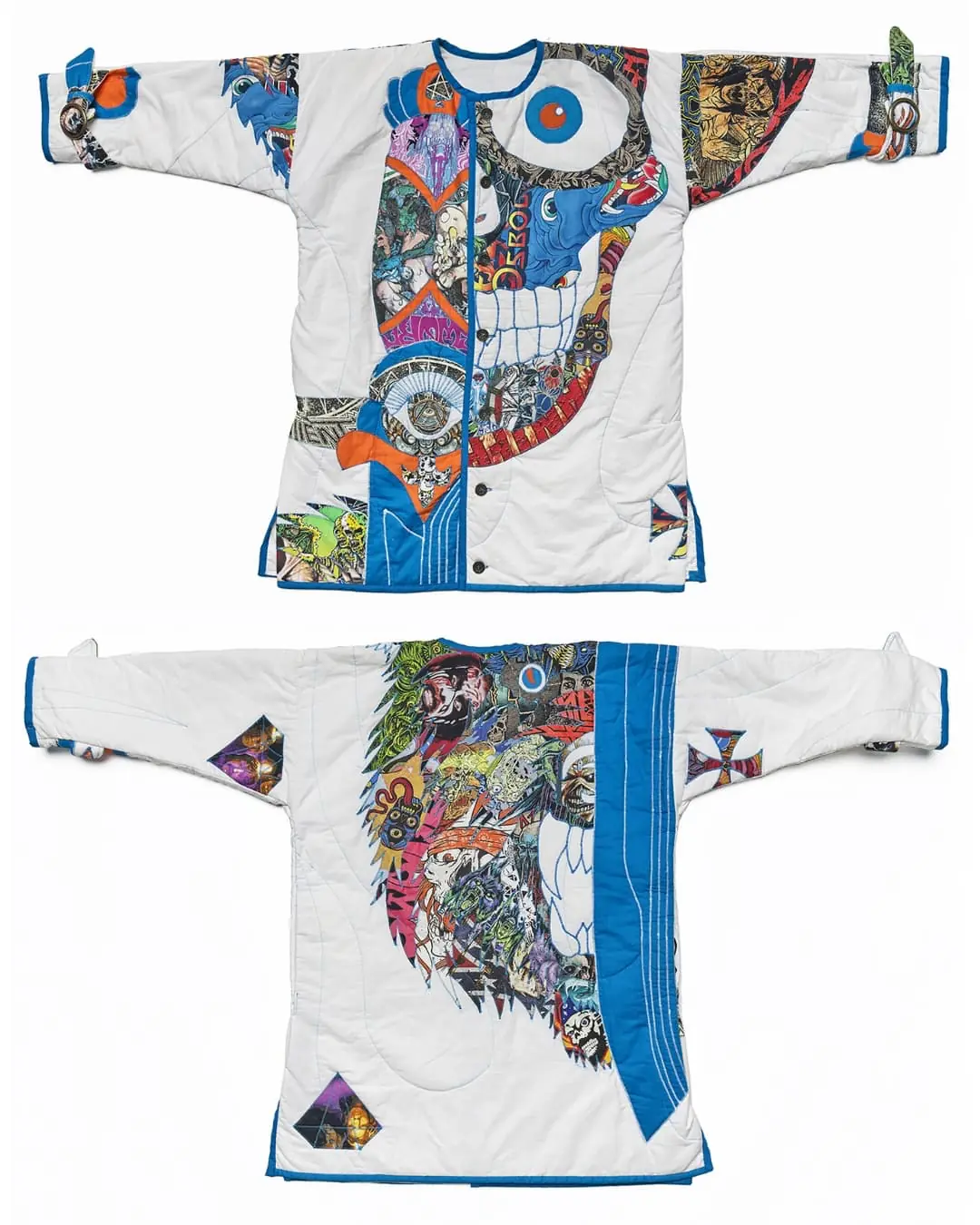
Craft Resurgence
I find the contemporary craft world very exciting right now. It’s inspiring to see so many artists focusing on the handmade and pushing the boundaries of traditional processes and techniques. I see my practice as part of that wave as I attempt to challenge the established imagery and style of quilting.
I believe craft will become a respite from our technology driven society. While some aspects of our lives will be increasingly automated and devoid of human interaction, craft will continue to show an individual’s hand within a work. This handmade concept is very important to my practice.
‘Imperfections are an integral part of each piece. And every mistake and error an artist makes is ultimately what makes us who we are.’
Ben Venom, Quilt artist
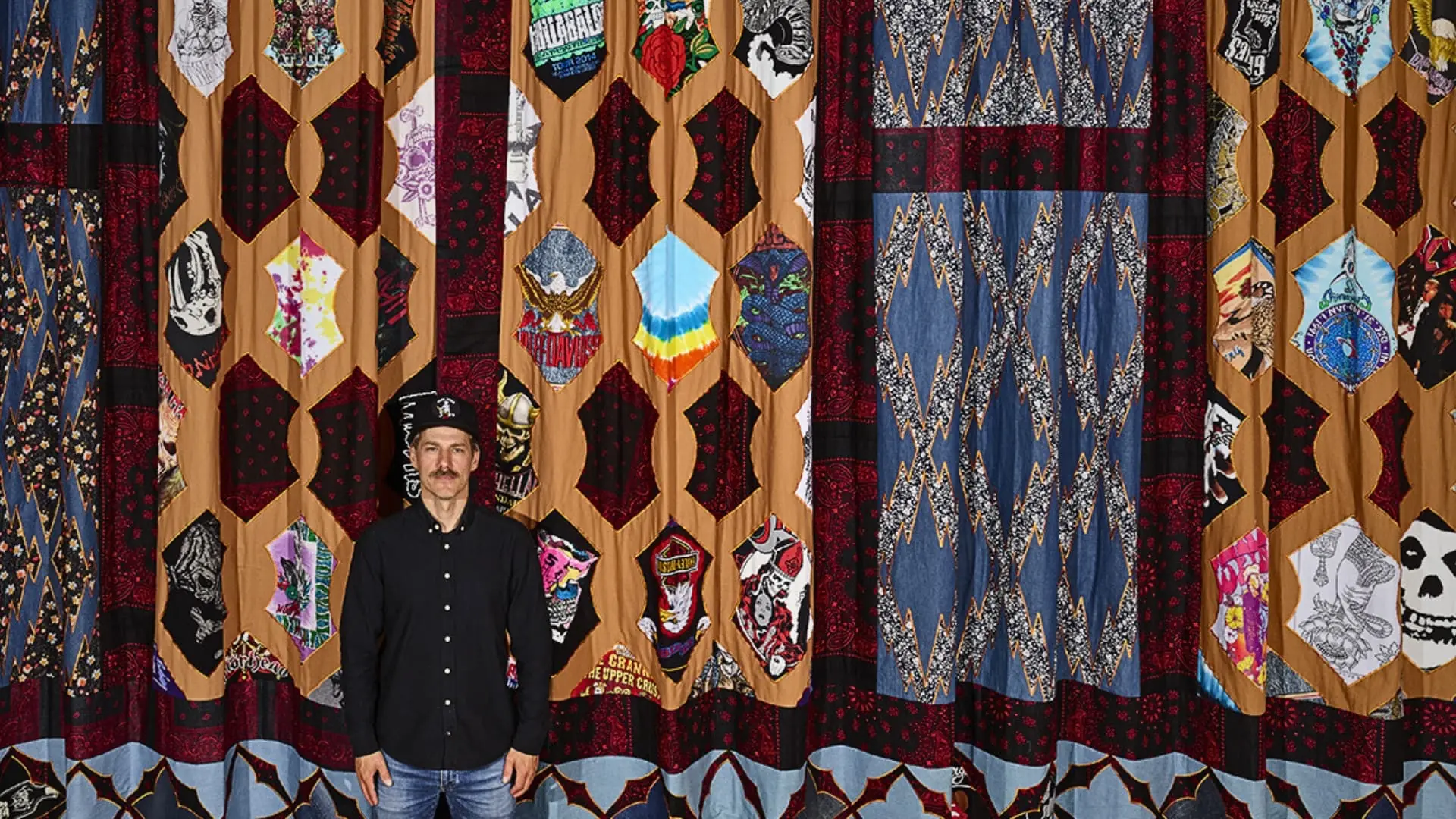
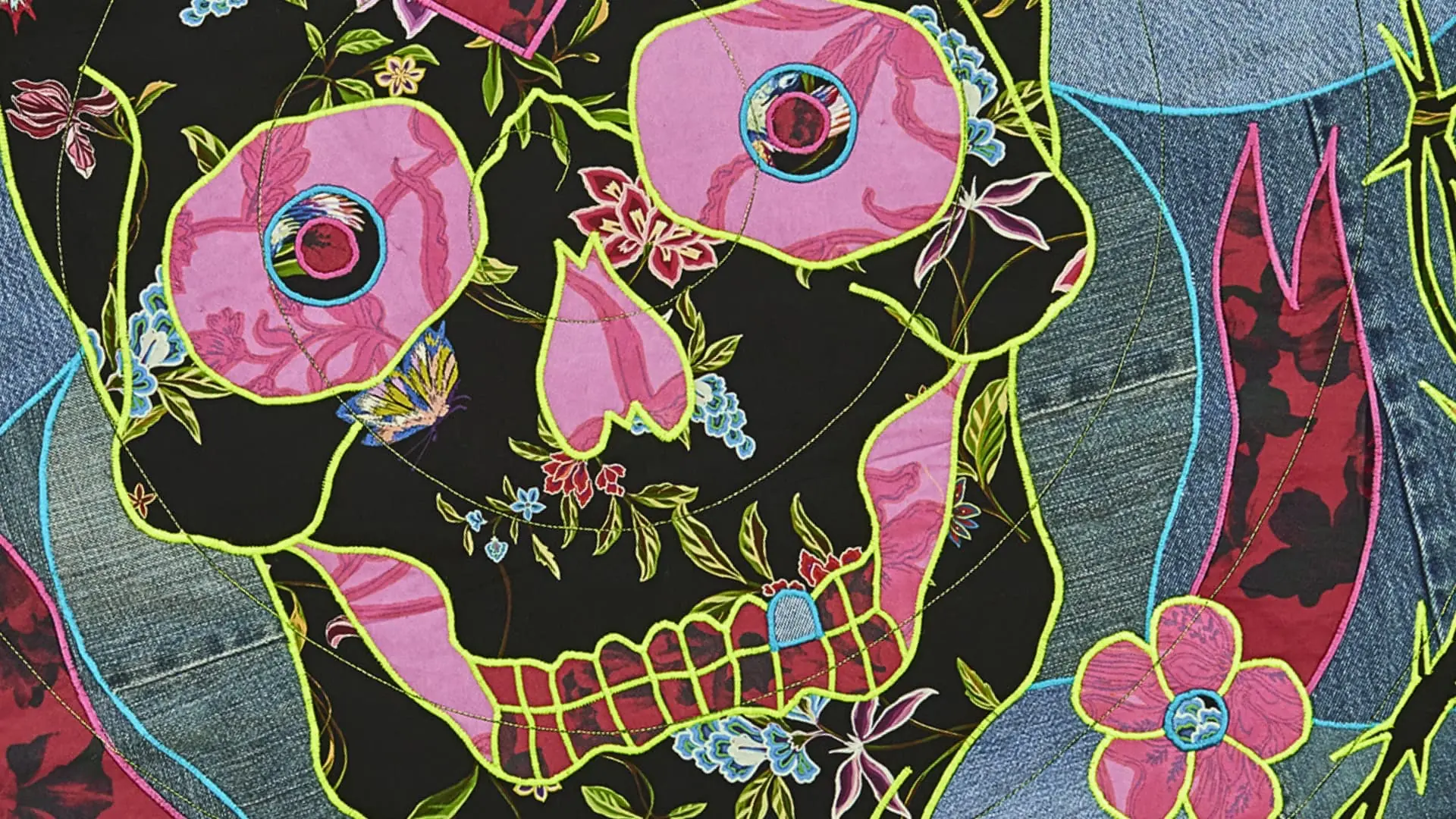
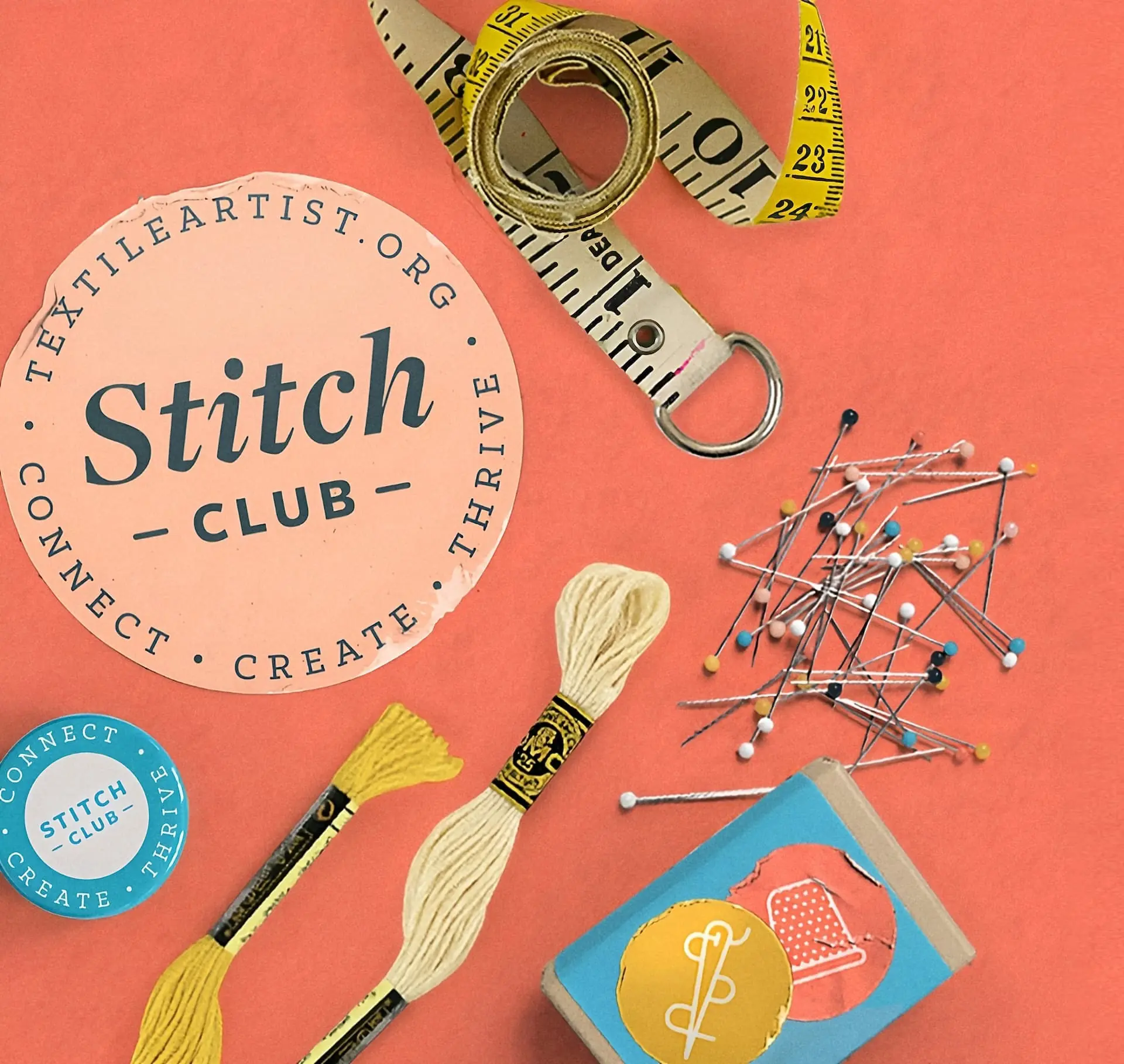
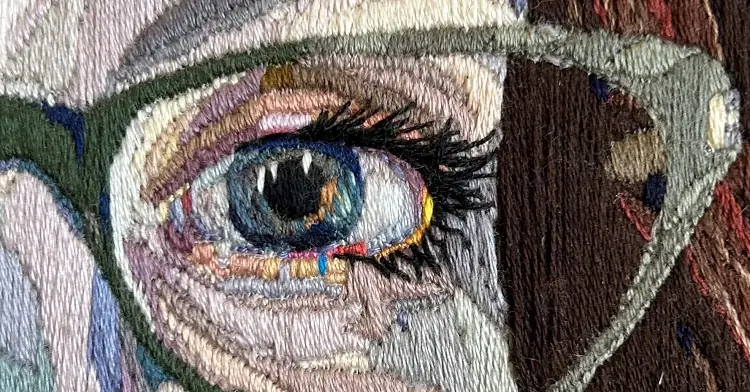
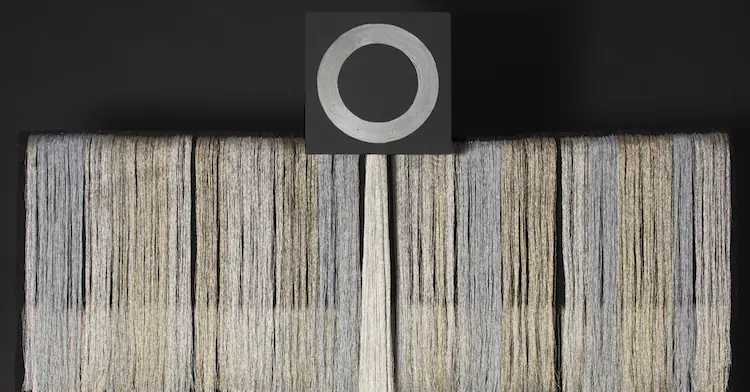
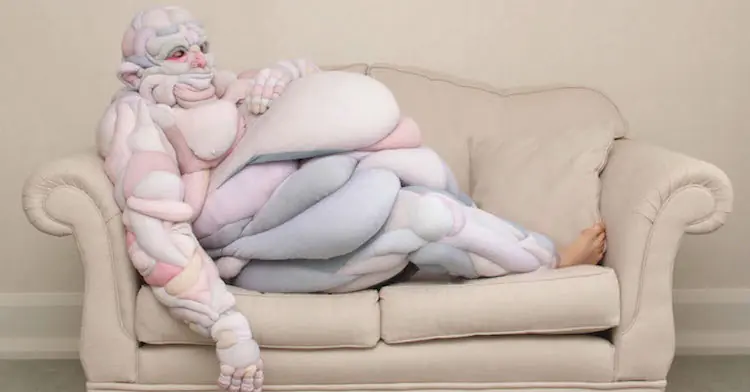
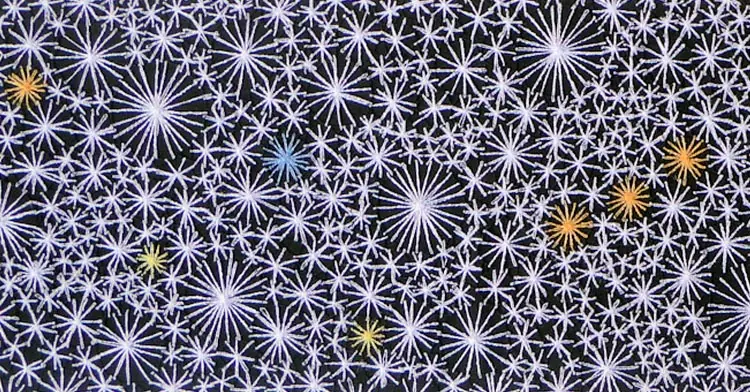
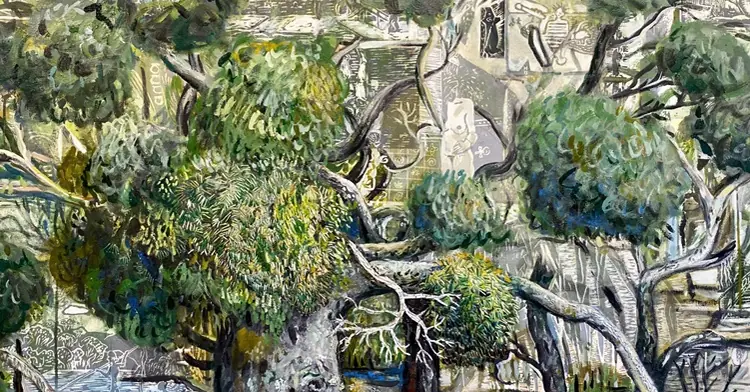
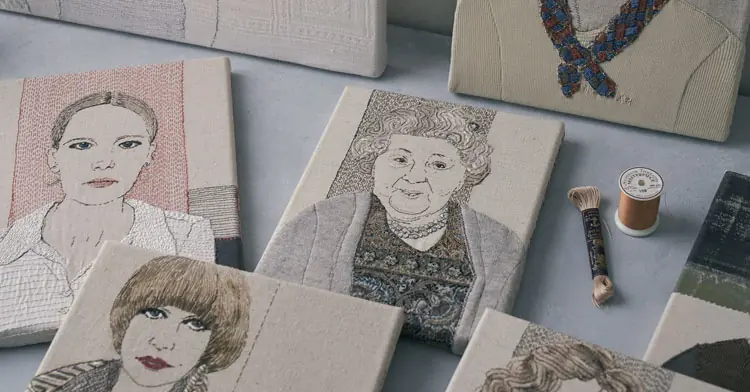
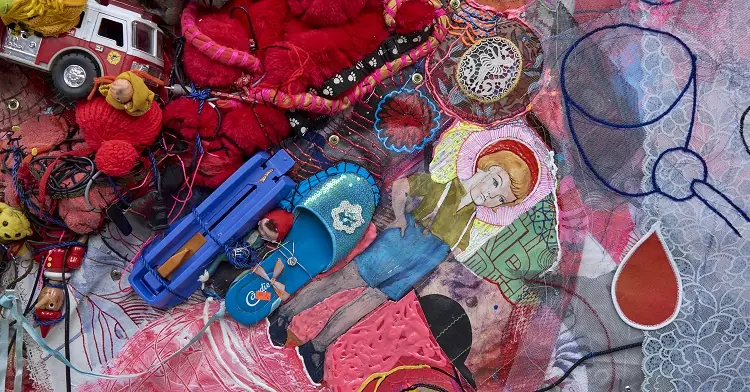
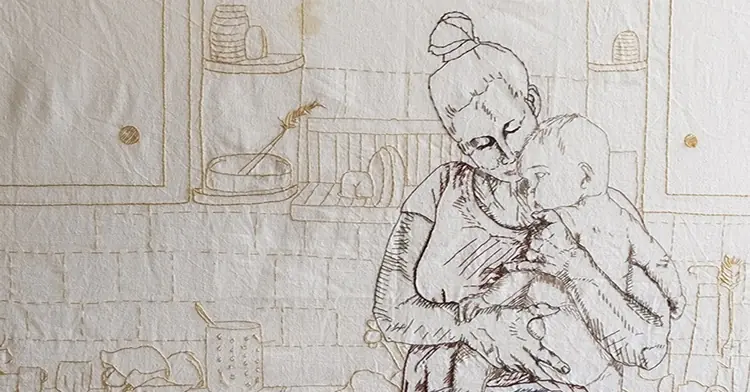
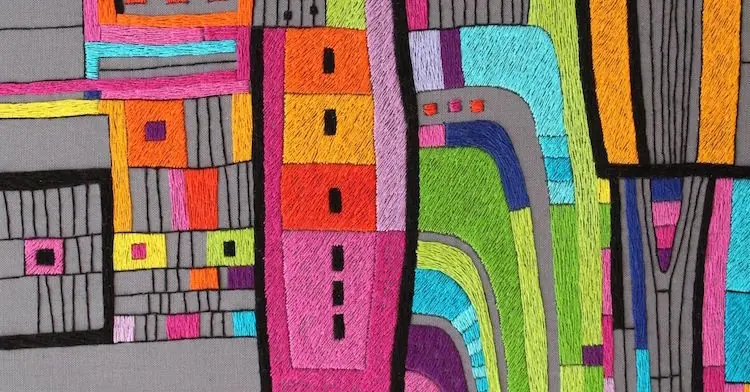
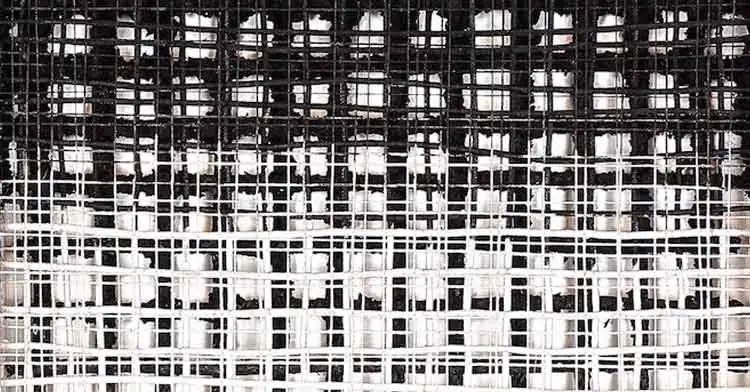
3 comments
Rose Archer
While in high school, Ben (Pope HS) & my son (John Archer, Walton HS), skateboarded together in Marietta, GA. And, they shared the same music tastes. I’m John’s mother & a prolific, mostly “traditional” quilter. My son told me about Ben and I do admire his artistry which I’ve shared with my guild friends. Congratulations on your amazing journey, Ben.
Petra Ruebsamen
This is the perfect and freshest cross over I have come across in the quilter´s world – love his attitude and most of all his works!!
jill alo
LOVE this work, so far removed from Grandma’s versions of fabric art, and stands on its own. Punk rock roots mixed with DIY energy, really striking results.